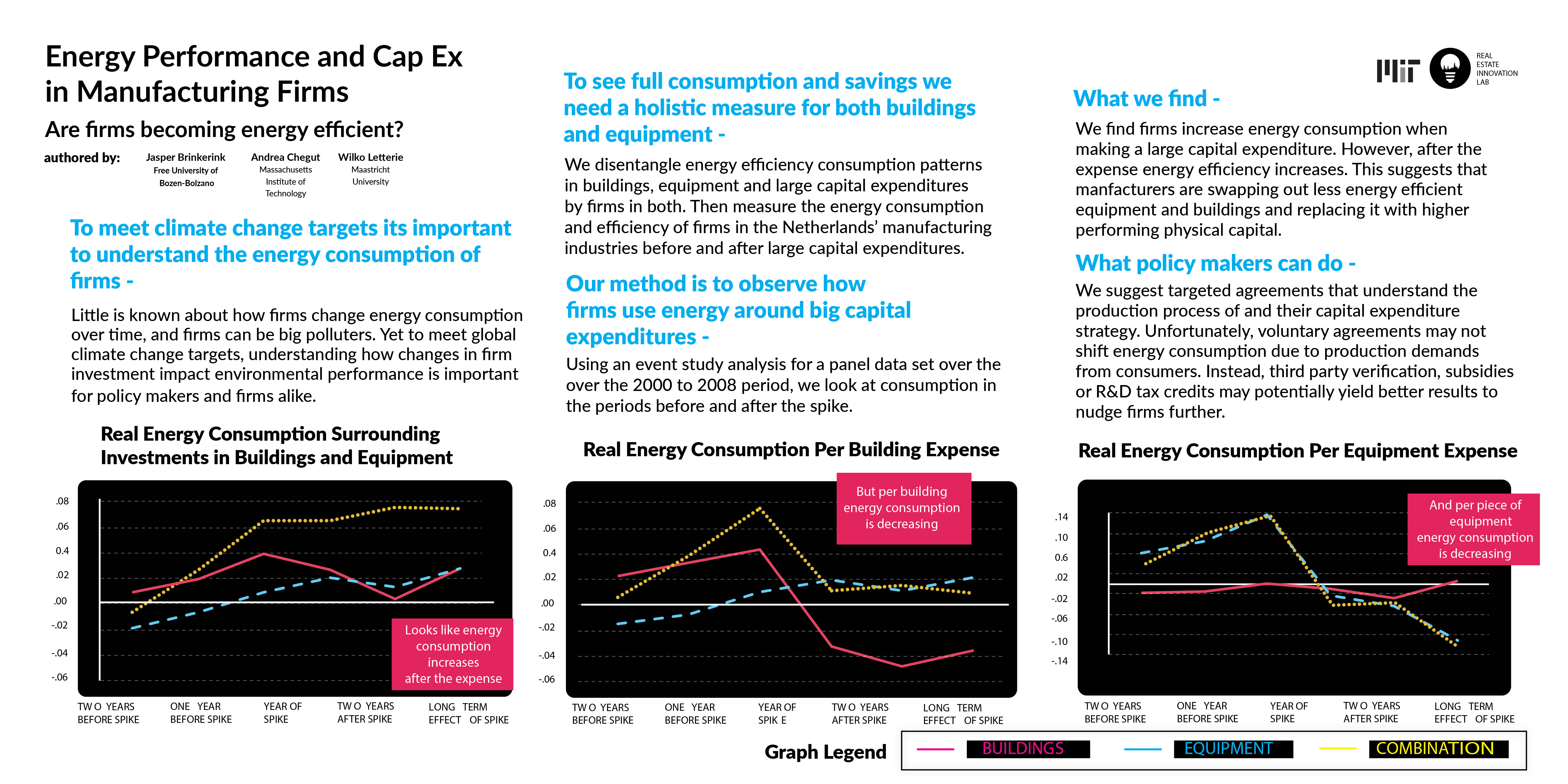The main findings of our analysis are that when firms invest in both buildings and equipment simultaneously energy consumption increases. This result signals that firms engaging in a simultaneous investment are expanding the scale of their operations. Overall, energy consumption is increasing with increased production. However, new buildings and new equipment tend to incorporate technology consuming less energy. After investment has taken place energy efficiency improves. Operational efficiency of firms improves when investing in equipment but it decreases when investing in buildings. In particular, firms operating in energy and capital intensive industries and high-tech industries face financial damage when investing in buildings, which is an area where policy makers, engineers and firms can join to identify energy efficiency solutions.
Energy Performance and Capital Expenditures in Manufacturing Industries
Little is known about how firms change energy consumption over time. Yet, to meet global climate change targets, understanding how changes in firm investment impact environmental performance is important for policymakers and firms alike. To investigate the environmental performance of firms, we measure the energy consumption and efficiency of firms in the Netherlands’ manufacturing industries before and after large capital expenditures over the 2000 to 2008 period. We find that firms increase energy consumption when experiencing a simultaneous investment. However, after large capital expenditures, energy efficiency increases. Further decomposition by firm types suggests that the building capital investments of firms active in high-tech, energy-intensive, and low labor-intensive industries do not coincide with energy efficiency improvements, while energy efficiency does increase with capital expenditures in equipment. From a policy perspective, it is important for regulators to understand firm investment and production processes, which help regulators understand when and where energy efficiency increases are feasible across firm types and expansionary production strategies. Firms, regulators, and other third parties may work together to develop an energy efficiency plan in line with investment strategies, including enhanced transparency by firms, energy efficiency subsidies, and R&D tax credits, for innovation. Targeted agreements may work to cooperatively improve energy performance.

